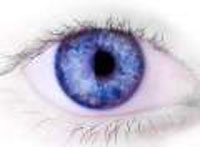Apply for US visa? Store your biometric information
By Margarita Snegireva. The Federal Bureau of Investigation (FBI) intends to create a new billion-dollar database constructed specially for collecting the physical characteristics of United States visa applicants.

This data will also be used by the British intelligence agencies. This database is going to be the world’s largest database for security identification.
A West Virginia University- based researcher is presently working on the technology that will enable FBI to capture images of people's irises at distances of up to 15 feet and also faces from about 200 yards away, without any prior knowledge to the subjects. Biometric information such as: fingerprints, handprints, mugshots, the way a person walks, ear lobe shape and size, and iris scans, are being collected in a secure building in Clarksburg , W. Va.
Biometric characteristics can be divided in two main classes:
1)physiological are related to the shape of the body. The oldest traits, that have been used for more than 100 years, are fingerprints. Other examples are face recognition, hand geometry and iris recognition.
2)behavioral are related to the behavior of a person. The first characteristic to be used, still widely used today, is the signature. More modern approaches are the study of keystroke dynamics and of voice.
Strictly speaking, voice is also a physiological trait because every person has a different pitch, but voice recognition is mainly based on the study of the way a person speaks, commonly classified as behavioral.
Other biometric strategies are being developed such as those based on gait (way of walking), retina, hand veins, ear recognition, facial thermogram, DNA, odor and palm prints.
Subscribe to Pravda.Ru Telegram channel, Facebook, RSS!




